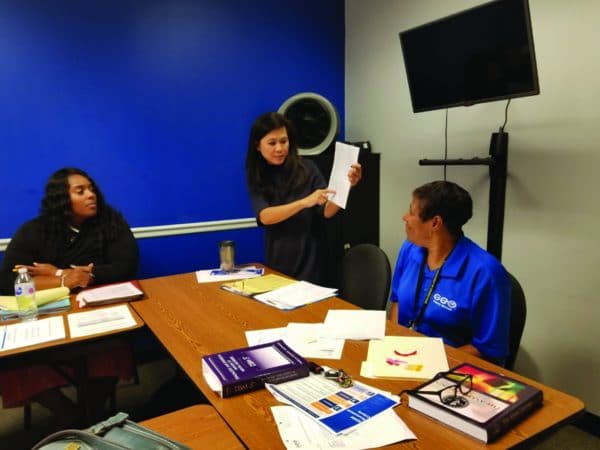
While evidence-based practices (EBP) are held as the “gold standard” in criminal justice reentry practices, the long-term success of a program using EBP depends on whether those practices are continuously measured and assessed long after implementation. Criminal justice researchers have found that community transition programs designed with integrity can only be effective if they maintain program fidelity, meaning they adhere to their original framework. In this way, EBP and program fidelity work together, and one without the other is challenged to produce effective program results.
How Evidence-based Practices Need Program Fidelity
The Needs Principle requires that transition programs designed with EBP respond to criminogenic needs. Programs may last several months based on an individual’s number and level of criminogenic needs. Individual and group cognitive behavioral therapy, substance abuse treatment, parenting, anger management, employment readiness, life skills training and housing needs are directly considered. However, even a program implemented with EBP can, over time, become less effective if program fidelity standards are not consistently met.
Maintaining program fidelity requires constant analysis and oversight, a challenging task to which many organizations struggle to allocate necessary resources. Eventually, if program fidelity is not maintained, programs designed with EBP diminish and fail to make an impact on the individuals they serve.

How GEO Reentry Maintains Program Fidelity
GEO Reentry has been implementing evidence-based programs to help individuals change their criminal thinking for almost three decades, and maintains program fidelity through significant investment in program development with the support of industry experts, as well as in-house training and research teams. What sets GEO Reentry apart from other providers is its fully implemented, well-regulated system of collecting and measuring information about all program participants as they move through each phase of the program.
“We measure program impact in three different ways,” GEO Reentry Non-Residential Reentry Center Vice President John Thurston said. “First, we look at the quality of the programming, measured through adherence to the principles of effective intervention. Second, we regularly review intermediate outcome measures that give us real-time feedback on program impact at each reentry center. Third is the longitudinal impact, which is recidivism—are they returning to the criminal justice system?”
Using a Consistent Internal Quality Assurance Process
GEO Reentry’s program managers, who oversee operations at each center, and area managers, who support these individuals, meet regularly to review participant files and provide feedback to counselors and facilitators. By using consistent forms and reporting methods, each center is evaluated by uniform data standards. Internally, GEO Reentry’s operations team has a separate department to review program fidelity. Qualified practitioners with decades of experience in the field evaluate programs and facilities, and report back in real-time.
For external reviews, GEO Reentry will, from time to time, contract with a University of Cincinnati Corrections Institute (UCCI) trained consultant to conduct a Correctional Program Checklist (CPC), one of the most rigorous and reliable evaluations for program effectiveness in the criminal justice field.
“In my discussions with thought leaders in the industry, I’ve been told, If I want to know if a program is effective, I want to see what their CPC score is. If their CPC score is ‘high adherence’ to evidence-based practices, then I will know, by definition, they’re having an impact on behavior and reducing recidivism,” Thurston said.

Reviewing Intermediate Outcomes
Measuring criminal thinking scores and LSI-R scores before and after a participant is enrolled in a GEO Reentry program indicates whether the program is effective and by how much.
“Conducting a pre-treatment LSI-R assessment and post-treatment LSI-R gives us the ability to see if we reduced risk of recidivism,” Thurston explained. “The same holds for TCU’s Criminal Thinking Scales self-assessment tool.”
There are multiple ways to measure intermediate outcomes, including participant sobriety tests, employment gains, and why a participant was discharged from a program. Managers look for negative drug screens, current employment status and successful program completions to indicate the program’s impact overall.
Monitoring Final Results for Program Success
Using intermediate outcomes reports and continuing to measure programmatic impact, GEO Reentry staff can accurately determine an individual’s risk for recidivating. This continued dedication to monitoring outcomes and measuring data is a major differentiator for their evidence-based programming, Thurston explained.
“It’s important to me to show results,” Thurston said. “I want to be able to demonstrate to community stakeholders, through fidelity audits, intermediate outcomes and recidivism comparisons, that our programming does make a difference and contributes to improved public safety.”
